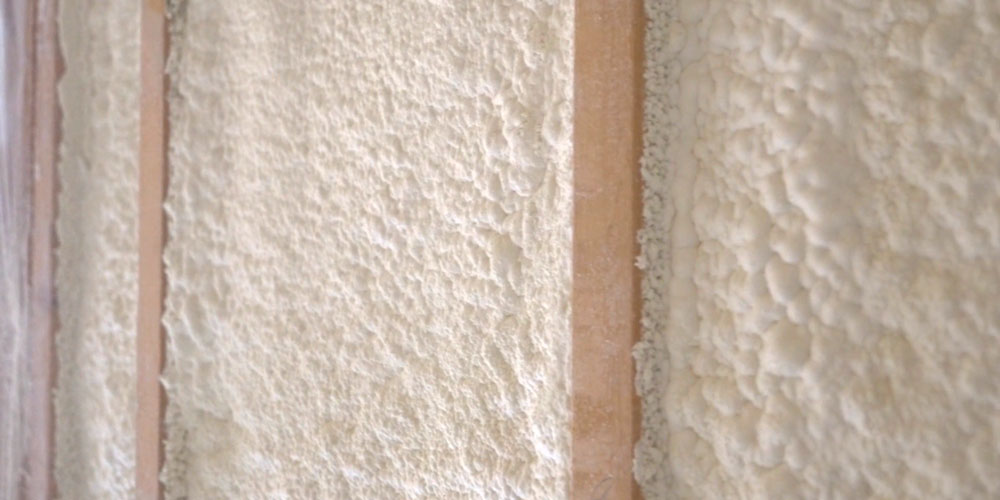How Smooth Should Spray Foam Insulation Be After Installation?


When it comes to insulating your pole barn, achieving a smooth finish with spray foam insulation is often a top priority.
But how smooth should spray foam be, and what factors come into play to achieve that perfect texture?
Let’s dive into the smoothness of spray foam insulation to help you understand what to expect and how to get the best results.
Understanding Spray Foam Insulation Texture
Spray foam insulation is a fantastic solution for sealing and insulating pole barns. It offers excellent thermal resistance and air sealing properties.
However, the texture of the foam after application can vary depending on several factors. One common expectation is to have a smooth, even surface, but achieving this can sometimes be more complicated than it seems.
How Smooth Should Spray Foam Be in Pole Barns?
One of the never-ending debates in the world of spray foam insulation is how smooth the finish should be, especially in pole barn construction.
Pole barns typically have wide, open, flat surfaces that make them ideal candidates for a smooth foam application. But how smooth is smooth enough?
- Expectations vs. Reality: Setting realistic expectations with your contractor before the project begins is crucial. While it’s possible to achieve a very smooth finish, similar to butter, this often requires additional time and cost. Achieving such a finish involves filling cavities completely and then cutting back the excess foam, which adds to the project’s complexity and expense.
- Consistent Smoothness: In most cases, the goal is to achieve a consistent texture rather than an ultra-smooth finish. The foam should be evenly applied without significant peaks and valleys, providing a uniform insulating layer across the surface.
Factors Affecting Spray Foam Smoothness
Several factors can influence the texture of spray foam insulation, especially in pole barns.
- Surface Corrugation: The depth of corrugations in the pole barn’s metal siding can affect the smoothness of the foam. Deeper corrugations (e.g., two inches deep) require more effort to achieve a flat surface.
- Installer Techniques: The techniques used by the installer play a significant role in the final texture. For example, filling the valleys of corrugated surfaces first can help achieve a smoother finish.
Techniques for Smoothing Out Spray Foam Insulation
If you’re aiming for a smoother finish, there are specific techniques that can help.
- Valley Filling: Begin by filling the deeper valleys or corrugations in the metal siding before applying the main layer of foam. This helps create a more even surface for the subsequent layers.
- Layering: Apply the foam in thinner layers, allowing each layer to set before applying the next. This method helps control the foam's expansion and achieve a more uniform finish.
- Cutting and Shaving: After the foam is fully cured, it can be cut back and shaved to achieve the desired level of smoothness. This step is crucial for achieving a super smooth finish but adds time and labor to the project.
Communication is Key
Whether you’re a homeowner or a contractor, clear communication about the desired finish is essential.
Check out these tips to make sure you and your contractor are on the same page.
- Discuss Expectations Up Front: Homeowners should communicate their expectations regarding the smoothness of the foam with their contractor before the project begins. This helps avoid misunderstandings and ensures both parties are on the same page.
- Understand Trade-Offs: Be aware that achieving a super smooth finish will likely increase the project’s time and cost. If speed and budget are priorities, a slightly less smooth but still consistent finish may be more practical.
Final Thoughts on Spray Foam Insulation Texture
Spray foam insulation offers numerous benefits for pole bars, from excellent thermal performance to superior air sealing.
Achieving the perfect texture is an added bonus that can enhance the overall appearance and functionality of the insulation. By understanding the factors that affect the smoothness and communicating your expectations clearly, you can ensure that your pole barn insulation project meets your needs.
If you’re interested in achieving a smooth spray foam finish, it’s always a good idea to consult with an experienced professional. While all of our dealers specialize in injection foam insulation, some also offer spray foam. To find a RetroFoam dealer in your neck of the woods, check out our Dealer Finder page.
Related Articles
The Best Spray Foam Insulation for Your Pole Barn: Open Cell, Closed Cell, or Both
Installing Spray Foam Insulation in Metal Buildings When It’s Cold
Benefits of Spray Foam Insulation on Commercial Garage Doors
About Eric Garcia
Eric brings his knowledge and training in building science, training in spray and injection foams from the manufacturers, more than eight years installing foam insulation, as well as selling and managing in the foam insulation industry. He is also BPI and Dale Carnegie certified and has taken several building science courses, including air sealing and building envelope. Eric is the Professor of Foam on our educational YouTube series Foam University. Even when Eric is off he is usually still “working” or thinking about work, but when he can get away he enjoys camping, hiking, hunting, and woodworking.


